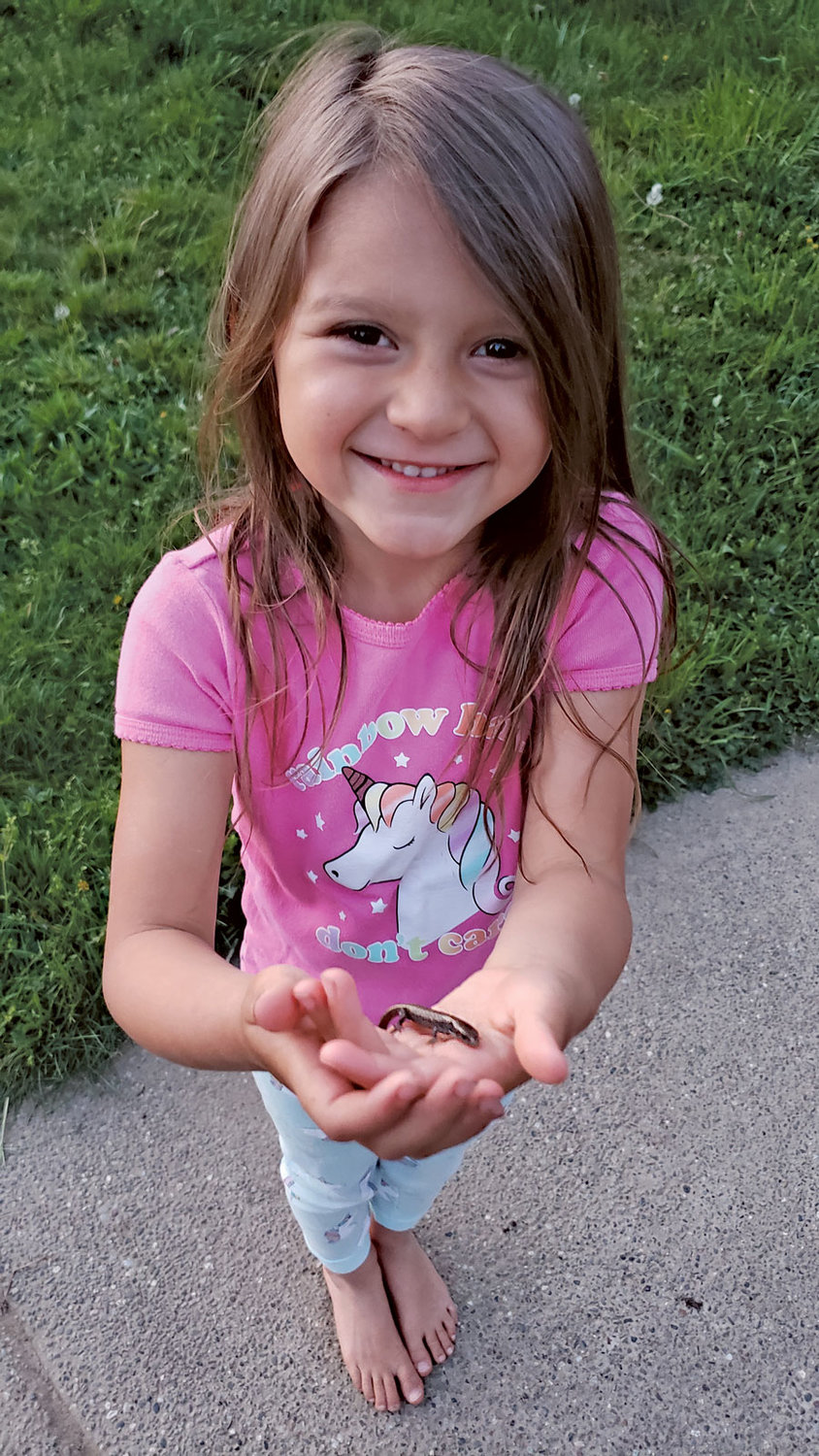
By now, Grace Bennett is an old hand at lizard keeping. She is 5 years old, and her pet for the last year has been a northern alligator lizard named Baraka.
Grace lives on a 5-acre farm near Vaughn, where her family maintains a large garden and runs a variety of animals. She spends much of her time tromping through the woods with her older brother, side by side, catching frogs and snakes and anything else that moves.
“I was just like that as a kid,” her father Tyler said. His policy has been catch-and-release: He will let his kids keep their finds in a cage for a day or two, and then he will ask them to let the animals return to their environment. “In my experience,” he said, when you try to keep wild creatures as pets, “most things end up dying.”
Yet when Grace brought him a tiny lizard from their backyard last summer, he decided to let her keep it. It was not much more than an inch long at the time. Over a year later, Baraka is healthy and eating well. Though it remains much smaller than the average alligator lizard, it has grown to three inches and seems to enjoy its excursions to the yard under Grace’s watchful eye. She keeps it in a small cage with sand, rocks, a water container and plastic palm trees.
Tyler told his daughter that if she wanted to keep it she would have to find food for it. When she asked him what it ate, he did not know what to tell her. They tried everything, from wild ants to the store-bought mealworms they feed their pet gecko. The only things Baraka eats? Spiders of any kind, daddy longlegs and small white insect larvae.
Baraka is named after a character from the video game and film series Mortal Kombat.
The northern alligator lizard, Elgaria coerulea, lives throughout the Pacific Northwest. It is most common in fields, clearings, and rocky areas and can survive in moderately developed landscapes, where it is often found in wood piles or rock walls. It is secretive and seldom strays far from crevices where it can hide, though it is also a good swimmer and is known to jump into water to escape danger. Being cold-blooded, it is inactive throughout the winter and on cold days.
In the wild, alligator lizards eat a variety of insects as well as snails, worms, small lizards and bird eggs. A typical alligator lizard measures ten inches from the tip of its nose to the tip of its tail. Our local subspecies, known as the northwestern alligator lizard, is generally smaller than those found farther south.
In summer, female alligator lizards give birth to live young, usually four or five in number. The babies, called neonates, are small yet independent. As in mammals with large litters, reptiles often produce runts, and perhaps Baraka was the smallest of its siblings and destined to be diminutive.
Has Grace learned from the responsibility? “Definitely,” said Tyler. “She’s doing a pretty good job.” From time to time he has to give her reminders, but she continues to catch food for Baraka, change the water and clean the cage. He has been impressed.
It may go against the usual policy of not keeping wild animals, but for now? “It’s working.”
UNDERWRITTEN BY THE FUND FOR NONPROFIT NEWS (NEWSMATCH) AT THE MIAMI FOUNDATION, THE ANGEL GUILD, ADVERTISERS, DONORS AND PEOPLE WHO SUPPORT INDEPENDENT, NONPROFIT LOCAL NEWS